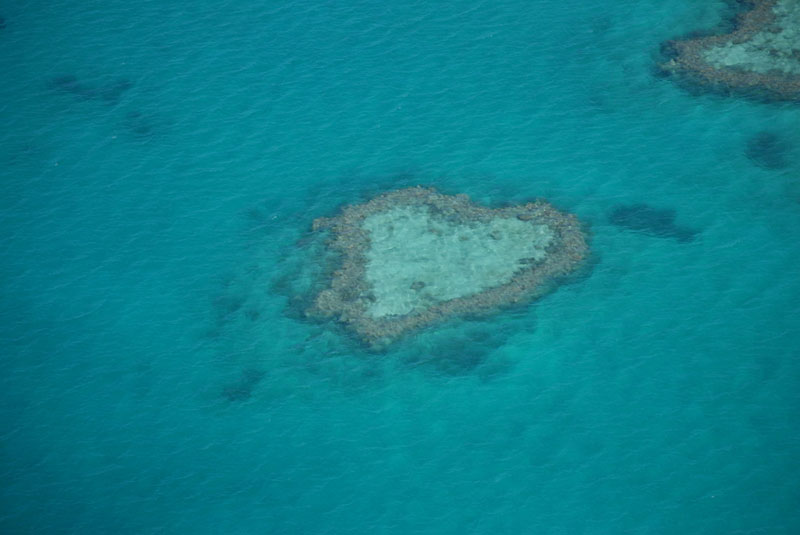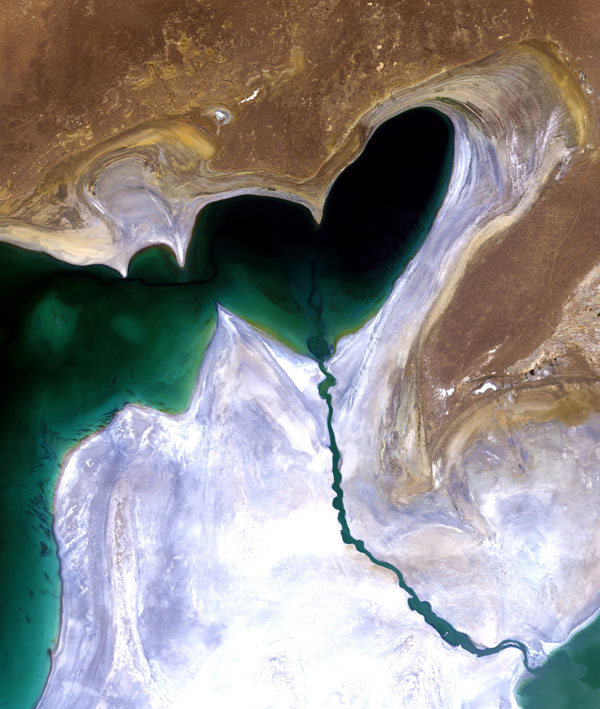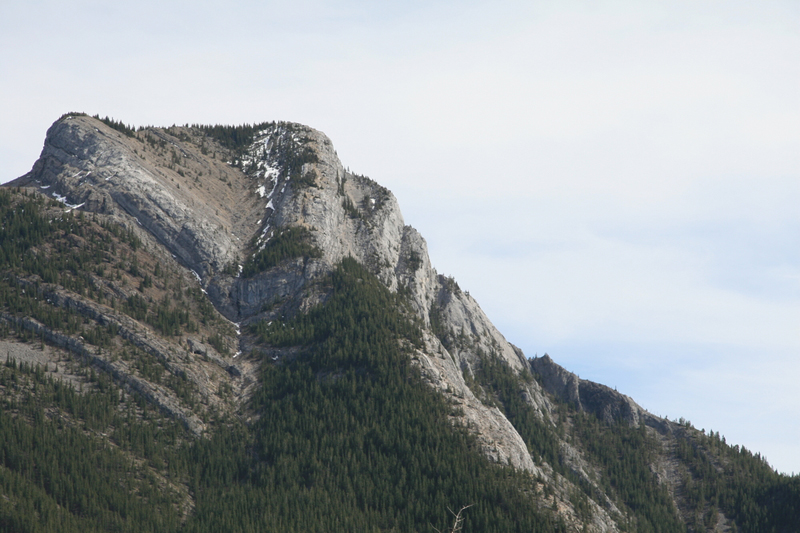
Amazing Images: Heart Shapes in Nature
Happy Valentine's Day, From Earth

The things that grow naturally in nature, or are shaped by the forces of erosion and plate tectonics, can take on recognizable shapes even without the hand of man. Among the shapes spotted in terrain across the world is that symbol of Valentine's Day, the heart. Click through to see some of the amazing heart-shaped features that have been spotted, from coral reefs to lowly lichen.
Heart Reef

One of the thousands of reefs that make up Australia's Great Barrier Reef the largest living structure on Earth is named Heart Reef for its shape. It is located in the Whitsunday Islands and must be viewed from the air as the area is protected and snorkelers and scuba divers are not allowed to enter.
Shrinking Aral Sea

Once the fourth-largest inland body of water in the world, Asia's Aral Sea has been steadily shrinking for the last 50 years as irrigation projects have drained off the river water feeding into it. The shrinking water supply has split the sea into two sections: the Small Aral Sea to the north in Kazakhstan and the Large Aral Sea to the south, shared by Kazakhstan and Uzbekistan. The Small Aral Sea, also called the North Aral Sea, morphed into a heart shape, as seen in this satellite image taken on July 24, 2010.
Heart-Shaped Lichen

Hiking along the spine of the Rocky Mountains from Yellowstone to the Yukon (a region dubbed the Y2Y), Jesse Lewis noticed this neon orange lichen growing on a rock in the shape of a heart.
Heart-Shaped Island

Tourists seeking a romantic destination have requested visits to an uninhabited, heart-shaped island off the coast of Croatia in the Adriatic Sea. Japan's Earth observation satellite, ALOS, took this image of the island.
Heart Mountain

This mountain in Alberta, Canada, was named for the heart-shaped ridge of limestone at its 7,005-foot (92,135 meters) peak in 1957. Hikers seeking a romantic-themed destination can scale the mountain, which lies about an hour from Calgary.
Get the world’s most fascinating discoveries delivered straight to your inbox.

Andrea Thompson is an associate editor at Scientific American, where she covers sustainability, energy and the environment. Prior to that, she was a senior writer covering climate science at Climate Central and a reporter and editor at Live Science, where she primarily covered Earth science and the environment. She holds a graduate degree in science health and environmental reporting from New York University, as well as a bachelor of science and and masters of science in atmospheric chemistry from the Georgia Institute of Technology.
